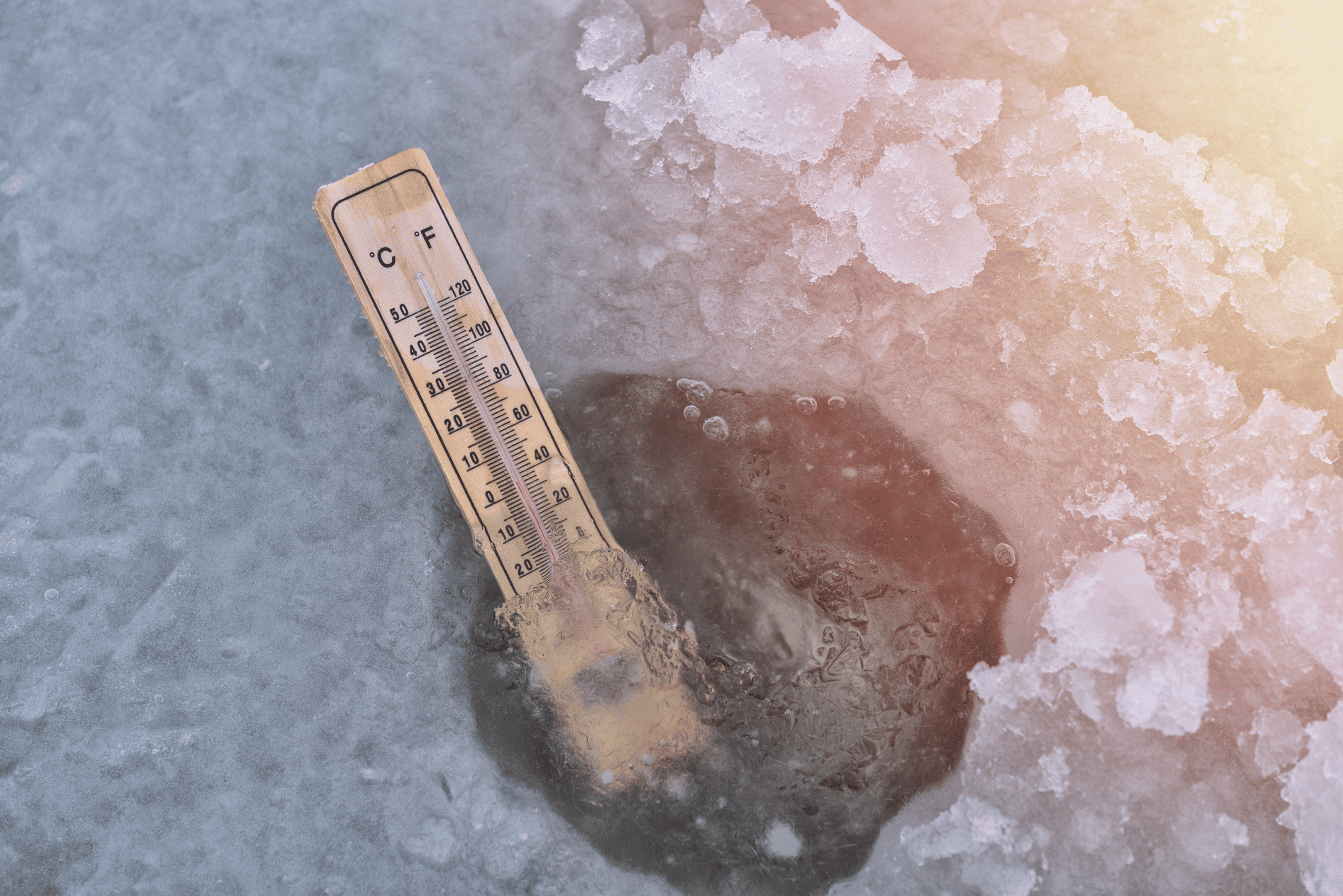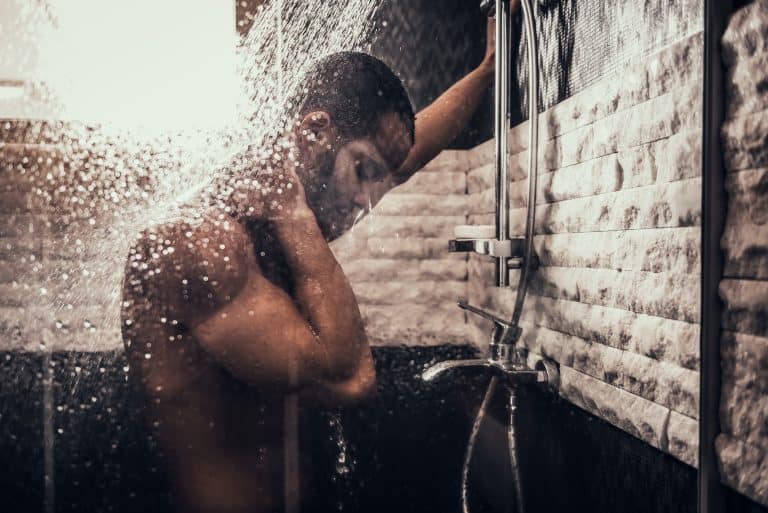Understanding Ice Bath Temperature
One of the most common questions from people who have recently been introduced to cold therapy is the right temperature to be cold plunging in. Although many factors should be considered, such as cold tolerance and your body’s response, we’ll be diving into the optimal cold plunge temperature (with some exact temperatures in degrees Fahrenheit) for your cold plunge sessions to maximize potential health benefits.
The Joy of The Chill
We all want to lead happier and healthier lives, in the pursuit of this goal, people often explore different routines. From exercising, trying out a new diet, or focusing on our mental health, people will try a variety of things to achieve their personal goals.
One such method that has been gaining attention in recent years is the cold plunge, also known as the cold tub or ice bath. While the prospect of voluntarily jumping into icy temperatures seems daunting and borderline crazy, the health benefits, both mental and physical, make a compelling argument for adopting cold water therapy. In this post, we will dive into the science and experience of cold plunges to shine some light on the benefits of taking the plunge.
Understanding The Cold Plunge

Before going into the various benefits, how about we break the ice with an understanding of cold plunges? we’ll explore what cold plunges entail, some historical context on the practice, and the physiological changes that occur when we subject ourselves to cold temperatures. You will hopefully walk away with a new appreciation of the power that cold plunges yield and maybe even add them to your regular routine.
In order to grasp some of the health benefits, it’s important to understand how the cold plunge can impact our bodies at a cellular level. We will check out the interesting science behind cold plunges and their respective benefits, from weight loss, and immune system health to reducing joint pain caused by inflammation.
Ice Baths aren’t just for Athletes
As mentioned above, cold plunges offer a variety of health benefits that will leave your body feeling revitalized, resilient, and ready to tackle the challenges life brings. Let’s kick things off by further exploring the ways cold plunges stimulate circulation by promoting healthier blood flow and correlating to the reduction of cardiovascular ailments. We will also take a deep dive into the scientific research behind the circulation benefits of cold plunges.
Everyone can benefit from an ice bath, but when it comes to athletes and those trying to make a positive impact on their fitness journey, cold plunges are a game changer. Let’s look into how icy immersion can aid in exercise recovery, reduce joint pain and inflammation, and help treat muscle soreness.
Part 1: Cold Plunges For Weight Loss

One of the primary benefits of the cold Plunge in terms of weight loss is its ability to boost your metabolism. when exposing your body to cold water it has to work much harder to maintain your core temperature. in order to maintain temperature your body will burn more calories to generate Heat, even though you are not engaging in physical activity. the increase in caloric expenditure to maintain temperatures, while modest, can compound over time to support weight loss goals. Furthermore, cold plunge immersion activates fat called Brown adipose tissue (BAT). dissimilar to white fat which are Body store for energy, BAT is burned to generate heat. Cold plunges help burn more fat, in particular the stubborn fat that accumulates around organs, which contributes to weight gain.
Part 2: The Correlation Between Cold Therapy and Immune Health
Cold plunges can help boost the immune system by triggering the production of immune cells. Cold exposure will stimulate the release of norepinephrine which is an immune cell-producing hormone in the bone marrow. With an increase in immune cells, our bodies are more capable when it comes to fending off infections and sickness.
Part 3: Cold Plunges and Inflammation
First, some evidence:
National Library of Medicine – This study observed that cold exposure increased production of the hormone norepinephrine. Subjects who took cold plunges exhibited increased levels of norepinephrine and had more immune cells in their bloodstream. The chart below helps illustrate the variety of benefits from BAT burning to caloric burn to preserve core temperature (Espeland et al.)
Boulder Longevity Institute – This report compiling multiple case studies helped shine some light on how cold plunges reduce inflammation. After just five days of healthy individuals participating in cold plunges, subjects had a reduction in inflammatory markers like (IL-2) and an increase in anti-inflammatory markers (IL-10). You might remember from biology that mitochondria are crucial in the aging process, “the powerhouse of the cell.” Because of their strenuous role, they have to be frequently renewed, contributing to the aging process. Fortunately, cold plunges and cold exposure in general, stimulate mitochondrial biogenesis (Ihsan, M. et al.). The result? We feel more energized and can move more freely without pain from inflammation. One study on cold exposure in 2015 on rheumatoid arthritis (RA) patients had promising results. Assessing treatments they found that full body cold exposure helped reduce morning pain, motion stiffness, fatigue, and improved function and speed throughout movements.
Part 4: Cold Plunge Temperatures

There’s no getting over the fact that when you enter a cold plunge it will give you a bit of a jolt. You don’t need to rush this process and go into a plunge that is as cold as possible. In terms of temperature there are several different levels in which you can take cold plunge depending on your experience. As you become more acclimated to the cold plunge you can extend your time in them or reduce the temperature, or both. We will break this down into three different sections from beginner to moderate to advanced
Mild Plunge (50-70° F or 10-21°C)
If you are either new to cold plunges or have a low tolerance to the cold, beginning with a more mild temp is advised. The above temperature range will give you the benefits of cold plunges without the shock and discomfort. Remember, its better to start off slow and acclimate before trying to go for the extra cold temps!
Moderate Plunge (45-50°F or 7-10°C)
If you want a more bracing cold plunge experience or want to enhance the benefits, we would recommend moderate cold plunge temperatures. this level of chill can be a challenging experience, but it can entail more physiological responses.
Advanced Plunge (below 45°F or 7°C).
This is where things get cold. temperatures below 45° f are usually reserved for experienced plungers. these temperatures can provide the most pronounced physiological responses but should be approached with caution. we only recommend trying this level of cold plunge if you have gradually built up tolerance and are confident you can manage the chill.
Wrapping Things Up

We hope this overview helped you gain a more in-depth understanding of what actually happens to your body when experiencing cold plunges. From reduced inflammation and skin benefits to more consistent energy levels throughout the day, many things can be gained from incorporating cold plunges into your life. Additionally, having an understanding of the different levels of cold plunges can help you find your temperature sweet spot, ensuring that your cold plunge experience is both enjoyable and effective.
Whether you are a beginner looking to explore the benefits of cold plunges and build them into your routine, or if you are genuinely a polar bear who wants to experience icy cold temperatures, there will be something for you. Remember that cold plunges are a highly individual practice, and what matters most is how it makes you feel and the positive impact it has on your overall well-being. So, take the plunge, experiment, and discover the incredible benefits that cold water immersion can bring to your life. Stay curious, stay resilient, and stay cold!
Q&A
Q1: What is the ideal temperature for a cold plunge?
The ideal temperature for a cold plunge can vary based on personal preferences and specific goals. However, a common guideline is water between 50°F (10°C) and 59°F (15°C). Water within this range is considered cold enough to trigger the desired physiological responses, such as vasoconstriction, without being dangerously frigid.
Q2: How long should I stay in a cold plunge?
The duration of your cold plunge should be based on your experience level and tolerance to cold exposure. Beginners should start with shorter durations, typically 1-2 minutes, and gradually extend the time as they become accustomed to the cold. Some experienced individuals may stay in for up to 5 minutes or more. It’s essential to listen to your body and exit the water if you start to shiver uncontrollably or feel excessively uncomfortable. Remember, cold plunge temperature is specific to the user.
Q3: Are there any health risks associated with cold plunges?
Cold plunges are generally safe for healthy individuals. However, they may not be suitable for everyone. People with certain medical conditions like heart problems or Raynaud’s disease should consult a healthcare professional before attempting cold plunges. It’s crucial to be aware of the potential risks, such as hypothermia and cold shock, and take appropriate precautions, like wearing warm clothing before and after the plunge.
Q4: Can cold plunges be adapted for hot weather or warm environments?
Yes, you can adapt cold plunges for hot weather or warm environments. If cold water is not readily available, you can create a DIY ice bath by adding ice to a container or using a cool, shaded area. The idea is to expose your body to a temperature significantly cooler than your core body temperature.
Q5: What are the benefits of cold plunges, and are they backed by science?
Cold plunges have been associated with various potential benefits, including improved circulation, reduced muscle soreness, increased alertness, and enhanced immune function. While scientific research supports many of these claims, it’s important to note that individual responses can vary. The benefits can also depend on factors like water temperature, duration, and consistency in practice.
Q6: How can I prepare for a cold plunge, and how should I recover afterward?
To prepare for a cold plunge or ice bath, warm up your body with light exercise or a hot shower. After the plunge, gradually rewarm your body by dressing in warm clothing and staying active to stimulate blood flow. You can also enjoy a warm beverage to help raise your core temperature.
Q7: Can cold plunges be combined with other wellness practices, like saunas or hot baths?
Yes, cold plunges can be combined with other wellness practices. This combination, known as contrast therapy, involves alternating between hot and cold exposures. It’s believed to enhance the benefits of each and is a popular choice for those seeking a holistic wellness experience.
Q8: What about cold showers?
A cold plunge involves fully submersing in frigid temperatures, and while it share many similarities with cold showers, more research is needed to prove if one is superior. For one, the water temperature in a cold plunge can reach as low as 39 degrees Fahrenheit, which is much colder than most cold showers. As a result, it may make sense that the benefits of cold therapy are maximized with an ice bath instead of a shower.

Final Thoughts
In summary, the ideal temperature and duration for cold plunges can vary depending on your goals and experience level. It’s essential to start slowly and listen to your body. If you have underlying health concerns, consult a healthcare professional before incorporating cold plunges into your routine. When practiced safely and consistently, cold plunges can offer numerous physical and mental benefits.

